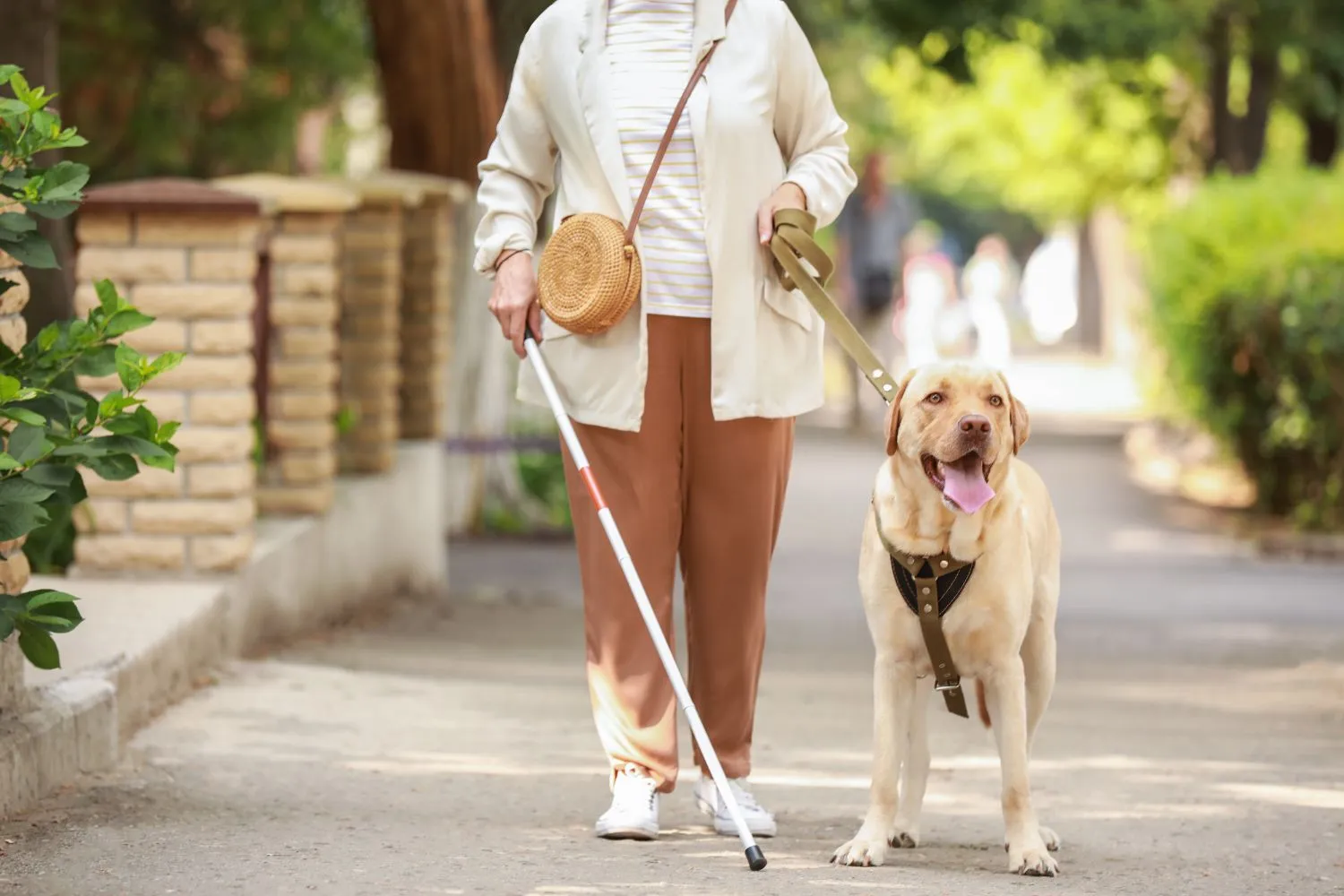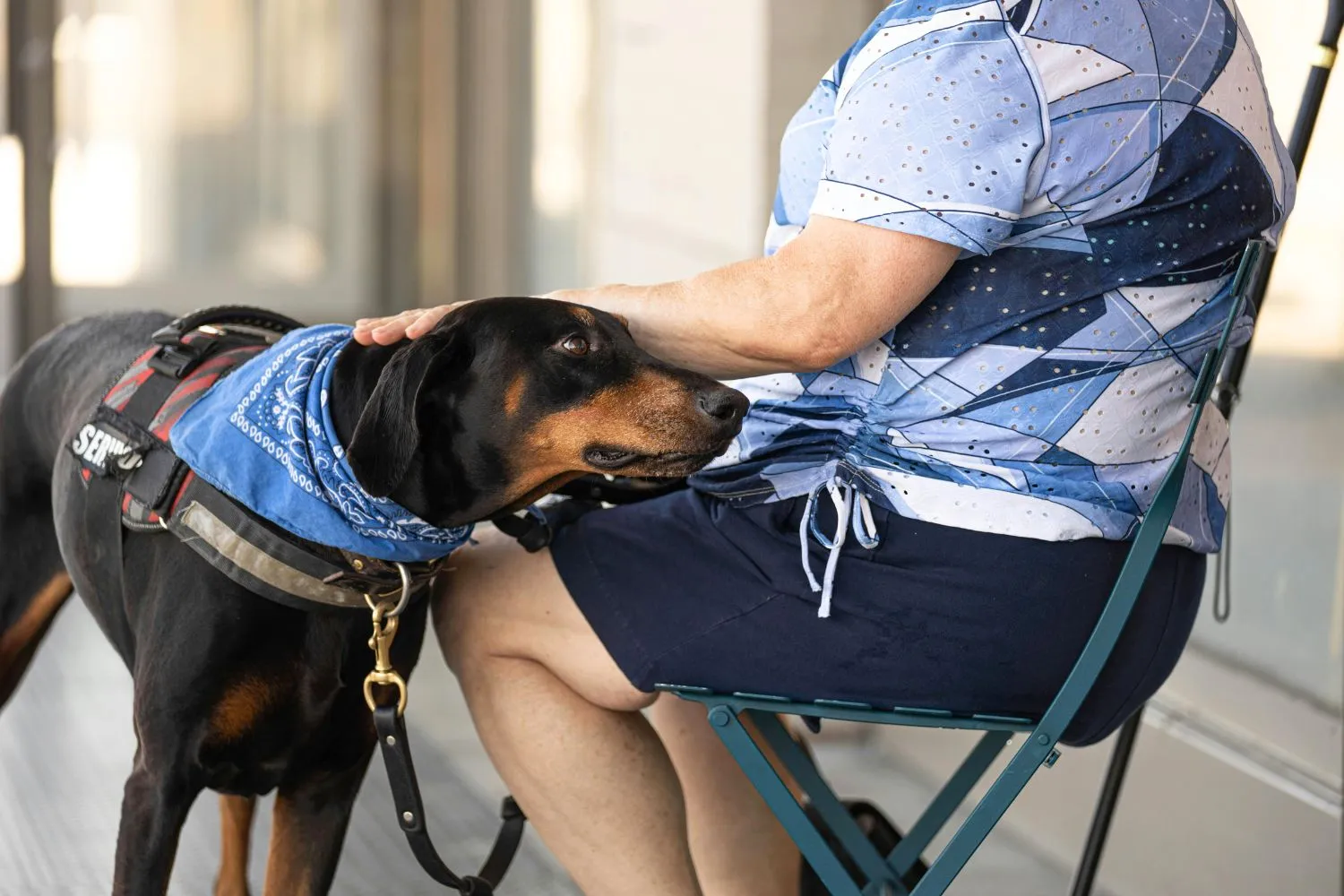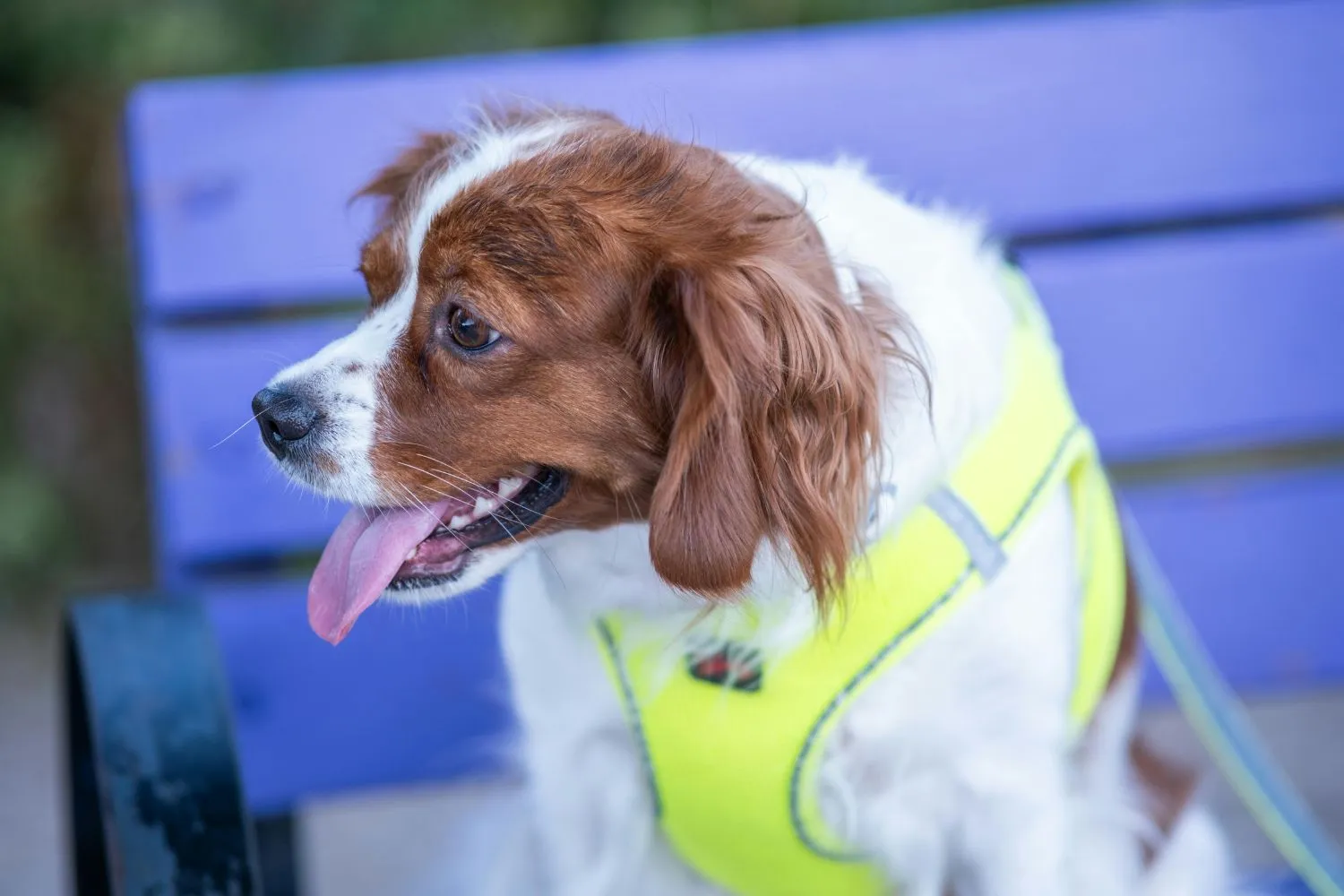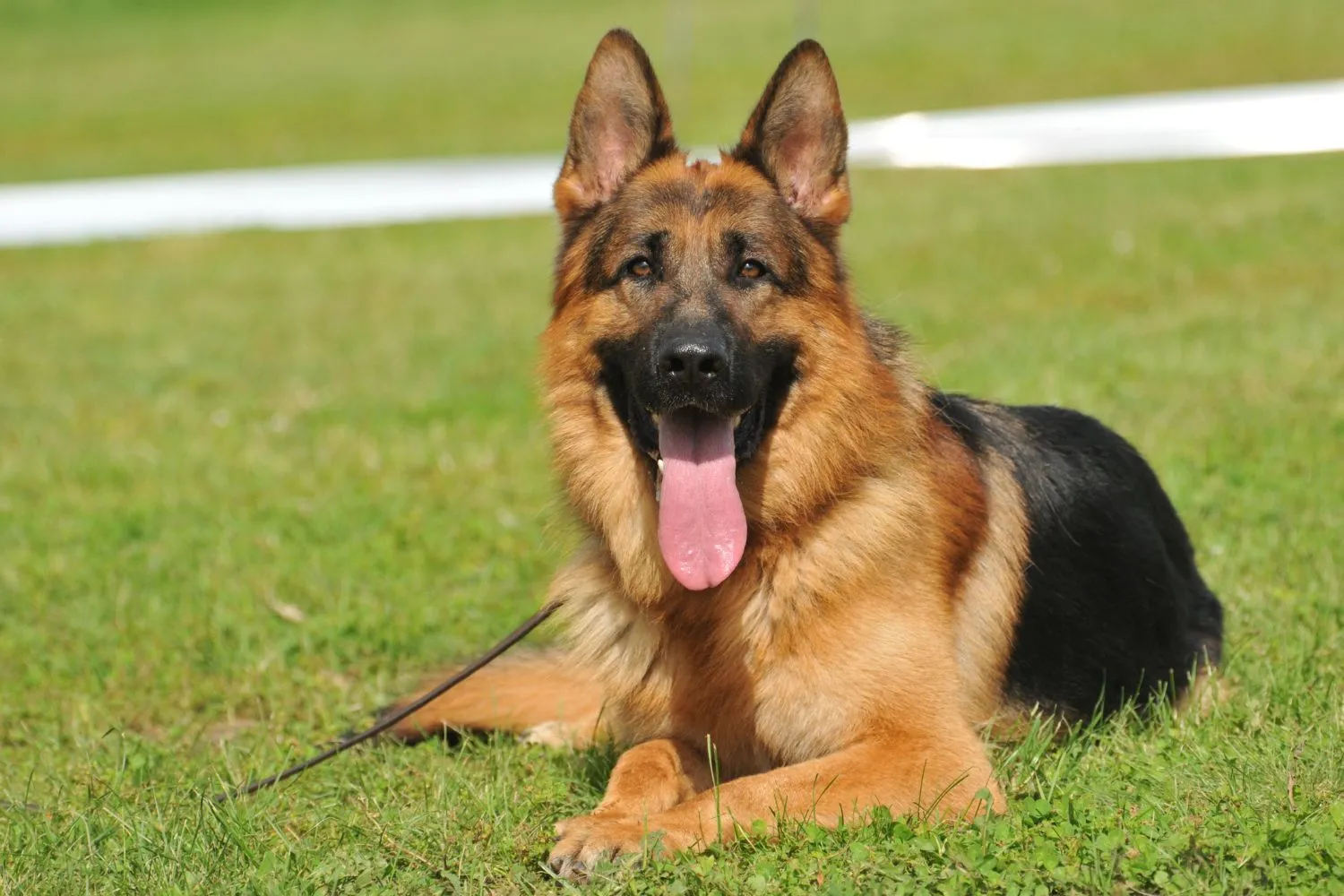Training a service dog is a profound journey, especially when you start with a puppy. It’s not merely about teaching commands; it’s about nurturing an extraordinary bond and shaping a loyal companion into a lifeline that will transform an individual’s life. A well-trained service dog offers independence and confidence, whether providing medical alerts, emotional support, or mobility assistance. But how do you begin this intricate process with a young dog? How do you transform a loving puppy into a highly skilled service animal? Unlike standard pet training, service puppies must adhere to stringent behavioral and legal standards to perform vital tasks for individuals with disabilities.
This guide will walk you through each step of the journey, helping you foster a trusting partnership that empowers both you and your puppy as it grows into a capable service dog. Early intervention and consistent training are crucial when considering how to train your puppy to be a service dog.
What Is a Service Dog?
A service dog is a specially trained canine companion that aids individuals with disabilities by performing specific tasks directly related to the individual’s condition. Every task is meticulously linked to the person’s unique needs. For instance, hearing dogs alert individuals who are hard of hearing or deaf to critical sounds, while guide dogs help visually impaired or blind individuals navigate their surroundings safely.
Psychiatric service dogs assist individuals with mental health conditions such as post-traumatic stress disorder (PTSD), obsessive-compulsive disorder (OCD), and schizophrenia. They can perform tasks like interrupting repetitive behaviors, turning on lights to alleviate anxiety, or reminding their handler to take medication. The Americans with Disabilities Act (ADA) defines a disability as a mental or physical condition that significantly limits one or more major life functions. This includes individuals with a past record of impairment, current conditions, and those perceived by others as disabled. Under the ADA, service dogs are considered working animals, not pets, as they provide essential assistance that enables their handlers to live more independently and safely.
Common Tasks Service Dogs Perform:
- Alert handlers to seizures, low blood sugar, or panic attacks.
- Guide the visually impaired through various environments.
- Provide stable mobility support for individuals with physical limitations.
- Interrupt harmful behaviors, crucial for those with PTSD or autism.
- Retrieve objects and assist with opening and closing doors.
 A golden retriever service dog with a harness looking alert
A golden retriever service dog with a harness looking alert
How to Train Your Puppy to Be a Service Dog
Training a puppy to become a service dog is a profoundly rewarding yet demanding process, requiring immense patience, unwavering dedication, and consistency. Unlike typical pet training, prospective service dogs must achieve exceptionally high standards of obedience, specialized task performance, and public access behavior to ensure they can effectively assist their handler in any given situation. Learning how to train your own service dog from an early age sets a strong foundation for future success.
Step-by-Step Puppy Service Dog Training
1. Early Socialization and Basic Obedience
Start foundational training as soon as your puppy is old enough, typically between 8-16 weeks. This involves exposing your puppy to a wide range of safe environments, sounds, people, and other animals. Simultaneously, introduce basic commands like “come,” “stay,” “sit,” “heel,” and “down.” Your future service dog must learn to follow these commands reliably in both quiet and increasingly distracting environments from a young age. Early positive experiences during this crucial developmental window are vital for a well-adjusted and confident service dog. For tips on early outdoor experiences, learn how to get a puppy to walk outside.
2. Advanced Obedience and Temperament Assessment
As your puppy grows, reinforce basic commands and introduce more complex obedience exercises. This stage is also critical for continuous temperament assessment. A service dog candidate must exhibit a stable, calm, and focused demeanor under pressure. Any signs of undue aggression, fear, or excessive distraction may indicate that the puppy is not suited for service work. Professional guidance during this phase can be invaluable.
3. Task Training
Once your puppy has mastered advanced obedience and demonstrated a stable temperament, begin training disability-related tasks tailored to your specific needs. This is where the personalized aspect of service dog training truly comes into play.
- Medical Alerts: Teach your puppy to detect specific changes related to medical conditions, such as anticipating seizures, recognizing low blood sugar levels, or indicating allergen exposure. For instance, you can explore how to train my dog for diabetic alert.
- Psychiatric Support: Train tasks like providing deep pressure therapy during panic attacks, interrupting harmful repetitive behaviors, or waking you from nightmares.
- Mobility Assistance: Focus on tasks such as helping with balance, retrieving dropped objects, or opening and closing doors and drawers.
- Guide Work: For visual impairments, this involves teaching navigation skills, obstacle avoidance, and safely guiding a handler.
4. Public Access Training
This is a critical phase for a service puppy. Teach your dog to behave impeccably in public places like stores, public transportation, restaurants, and other high-traffic areas. This includes:
- Remaining calm and focused around various distractions.
- Lying quietly under tables or beside their handler without seeking attention.
- Walking politely on a loose leash, ignoring passersby.
- Resisting the temptation to scavenge for food or interact with strangers.
5. Continued Socialization and Environmental Exposure
Throughout the training process, continue to expose your growing puppy to diverse settings, sounds, people, and other animals. A well-socialized service dog must maintain composure and focus in crowded areas, amidst loud noises, and in novel environments. This ongoing exposure builds resilience and adaptability.
 A service dog wearing a vest walking calmly next to its handler
A service dog wearing a vest walking calmly next to its handler
Consistency and positive reinforcement are paramount for successful service dog training. Combining daily practice with praise, treats, and structured training sessions will help your service puppy maintain good behavior and task reliability. To ensure adaptability, train in various environments, exposing them to different sounds, people, and situations. Patience and persistence are key, as mastering service dog skills can take months or even years. Additionally, keeping your dog healthy, well-fed, and properly exercised supports both their performance and overall well-being. If certain aspects of training prove challenging, seeking guidance from a certified service dog trainer offers invaluable expertise and support.
Training a Service Dog Yourself vs. Professional Trainers
Deciding whether to train your service puppy yourself or hire a professional is a significant consideration. Here’s a comparison to help you decide:
| Aspect | DIY Training | Professional Training |
|---|---|---|
| Success Rate | Highly dependent on the owner’s skill and dedication | High, especially with experienced, certified trainers |
| Cost | Lower, primarily self-paced expenses | Higher, often ranging from $15,000–$50,000 or more |
| Legality | Must meet ADA guidelines, owner responsible for certification | Professionally certified, ensuring adherence to standards |
| Time Commitment | 1-2 years of consistent, daily effort | 1-2 years, with structured sessions and guidance |
| Customization | Fully tailored to your specific needs and lifestyle | Can be customized, but often starts with general tasks |
If you have prior experience with dog training and are prepared to commit to a structured, consistent, and patient training process, DIY training can be an excellent option. It allows for personalized training directly tailored to your specific disability needs while profoundly strengthening the bond between you and your service puppy. However, if you require a highly reliable, fully trained service dog with expert guidance from the outset, professional training is often the better choice. Working with certified trainers ensures that your dog meets the highest standards of task performance, obedience, and public behavior, making them fully prepared to assist with your disability.
 A cute puppy looking attentively at a training treat
A cute puppy looking attentively at a training treat
Is a Dog in a Vest a Service Dog?
Observing a dog wearing a vest might lead many to assume it’s a service dog, but this isn’t always accurate. By law, service dogs are not mandated to wear vests, ID tags, or any specific gear. However, many handlers choose to equip their service dogs with vests to make them easily recognizable and to help prevent the public from distracting them while they are working. Despite this, the mere presence of a vest does not inherently confirm that a dog is a legitimate service animal.
How to Identify a True Service Dog:
- Well-trained and Obedient: A legitimate service dog remains calm, focused, and under control at all times. They do not bark excessively, lunge, or display aggressive behavior in public.
- Performs Specific Tasks: Service dogs are specifically trained to perform essential tasks that are directly related to their handler’s disability, such as guiding, alerting, retrieving objects, or providing stability.
- Focused on Their Handler: Unlike pets, service dogs do not seek attention from strangers or become easily distracted by their surroundings. Their primary focus is consistently assisting their handler.
- Allowed in Public Places: Under the ADA, service dogs are granted full public access rights, meaning they are permitted in restaurants, stores, public transportation, and other public areas where regular pets may not be allowed.
 A dog wearing a blue service vest and smiling, indicating readiness for work
A dog wearing a blue service vest and smiling, indicating readiness for work
Common Service Dog Breeds for Puppies
While many dog breeds can be trained as service dogs, some breeds are naturally better suited for the job due to their innate temperament, intelligence, and strong work ethic. When selecting a puppy for service work, these traits are particularly important.
Top Service Dog Breeds:
- German Shepherd: Known for being protective, intensely loyal, and exceptionally capable for mobility tasks. Their intelligence makes them highly trainable from a young age.
- Border Collie: Highly alert, energetic, and excellent for medical alert tasks due to their keen senses and intelligence.
- Labrador Retriever: Renowned for being intelligent, friendly, and eager to please, making them highly trainable and adaptable.
- Golden Retriever: Characterized by their patience, gentle nature, and high trainability, making them ideal for a wide range of tasks.
- Standard Poodle: A hypoallergenic option, Standard Poodles are highly intelligent and possess a strong desire to work and learn.
Other breeds, including Mixed Breeds, Boxers, and Dobermans, can also make great service dogs, depending significantly on their individual temperament and the quality of their training from puppyhood.
 A majestic German Shepherd dog sitting calmly, a common service dog breed
A majestic German Shepherd dog sitting calmly, a common service dog breed
FAQ | How to Train a Puppy to Be a Service Dog
How do I teach my puppy to be a service dog?
To train your puppy as a service animal, begin with early socialization and basic obedience skills. Progressively teach specialized tasks that align with your needs, using consistent positive reinforcement. Expose your puppy to diverse environments to ensure adaptability and reliability as it matures.
What disqualifies a dog from being a service dog?
A dog can be disqualified from service animal work if it lacks proper training, exhibits aggressive behavior, is difficult to control, or consistently fails to perform specific tasks that mitigate its owner’s disability. Temperament issues, such as extreme shyness or fear, can also be disqualifying factors.
Can service puppies be trained at home?
Yes, service puppies can be trained at home with immense consistency, dedication, and the correct training techniques. However, mastering the high standards of obedience, public behavior, and specialized tasks often requires months or even years of commitment. Many handlers choose to work with professional trainers for additional guidance and to ensure their puppy meets the stringent requirements for service work.
How long does it take to train a puppy to be a service dog?
Training a puppy to become a fully certified service animal can take anywhere from 1.5 to 3 years, depending on the individual dog’s abilities, temperament, and the complexity of the specific tasks it must learn. This includes foundational puppy training through advanced task and public access work.
Conclusion
Embarking on the journey of How To Train A Puppy To Be A Service Dog is a significant commitment, but one that offers unparalleled rewards. By understanding the foundational principles of early socialization, basic and advanced obedience, and task-specific training, you can lay the groundwork for a highly capable and devoted companion. The process demands patience, consistency, and a deep bond with your dog, but the independence and confidence a well-trained service dog provides are truly life-changing. Whether you choose to undertake this endeavor yourself or seek the expertise of professional trainers, remember that the goal is to create a working partnership built on trust, clear communication, and mutual respect. Begin today, and nurture your puppy into the incredible service dog it is destined to become.
